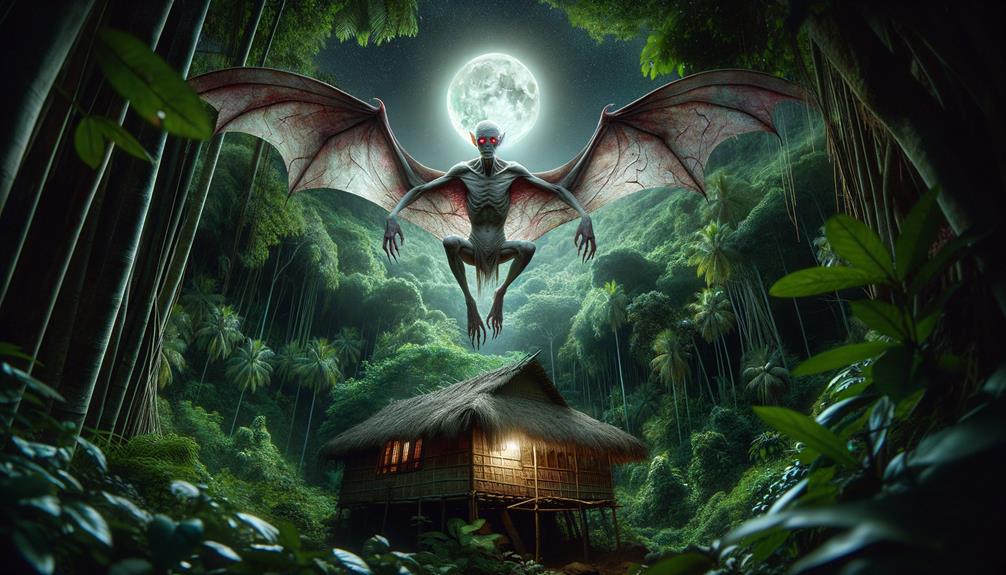Dive into the Enigma of the Aswang – A Unique Filipino Vampire-like Spirit
Deep within the Philippines, a creature of horror and mystery dwells, capable of making the most courageous among us shudder. The Aswang, a renowned being in Filipino folklore, is not just a vampire but a shapeshifting, blood-drinking spirit, boasting abilities beyond our wildest dreams. As an avid scholar, I've meticulously studied the different types of this intriguing creature, from a vampire-like being to a weredog, witch, and even a ghoul. Its preference for hunting in the night and targeting the most vulnerable among us—pregnant women and children—elicits a spine-chilling feeling. But how can such a creature exist? How has it shaped a society? It's within this curiosity that we'll delve deeper into the captivating lore of the Aswang, highlighting its lasting impact on Filipino culture and beyond.
Unmasking the Aswang – A Shape-shifting Specter
The Aswang is more than a simple vampire; it's a shape-shifting, bloodthirsty spirit that defies our usual understanding of mythical creatures. This spirit can transform into various forms, from a vampire-like creature to a viscera-sucking being or a weredog. This uniqueness lends itself to a range of classifications within Filipino folklore, each more fascinating than the last.
The Aswang's Hunting Habits – A Nighttime Nightmare
The Aswang's nocturnal hunting habits and its penchant for targeting the most vulnerable—pregnant women and children—create a chilling narrative that's cemented in our minds. This depiction not only fuels our fear of the unknown but also provides a real-world example of how societies create narratives to protect and caution their members.
The Aswang's Influence – A Significant Cultural Impact
The Aswang's lore is not merely a tale of horror; it's a cultural phenomenon that has shaped Filipino society. From influencing local beliefs to shaping national media, the Aswang's influence extends far beyond the realm of myth and into the day-to-day lives of Filipinos.
In conclusion, the Aswang's fascinating lore and enduring cultural impact make it a unique creature worth exploring. The mystery surrounding this vampire-like spirit adds to its intrigue, drawing us into a world where reality and folklore intertwine. In the end, it's not just about the fear it evokes, but the cultural significance and societal influence that make the Aswang a compelling subject of study.
Understanding the Aswang Myth

Unraveling the Aswang Myth: A Deep Dive into the Philippine Folklore
To truly grasp the essence of the Aswang myth, we must delve into its layered nature, acknowledging its embodiment of an array of supernatural entities. From fearsome vampires and weredogs to malevolent witches and ghouls, this fascinating creature occupies a prominent place in the rich tapestry of Philippine folklore. The Aswang, a supernatural being from Filipino lore, takes on myriad forms, all of which share a chilling predilection for human flesh – an appetite that intensifies under the cover of darkness. This convergence of mythical entities underscores not only the diverse richness of Filipino folklore but also reveals the profound depth of cultural fears and superstitions prevalent in the Philippines.
The genesis of the Aswang myth can be traced back to the 16th-century Malay communities of the Philippines. Spanish explorers were among the first to chronicle the existence of these eerie creatures, which have since seeped into the collective consciousness of the Filipino people. Fast forward to today, and the Aswang remains a dominant figure in Philippine horror and thriller films, literature, and various media forms, underlining its lasting influence.
Let's spotlight one specific type of Aswang – the manananggal. This creature has a unique place in Filipino folklore. Often illustrated as a woman capable of detaching her upper torso and sprouting bat-like wings in the dead of night, the manananggal encapsulates the horrifying and grotesque elements of the Aswang myth.
“*The manananggal embodies the chilling and grotesque aspects of the Aswang myth.*”
To fully appreciate the Aswang myth, one must immerse themselves in the cultural context of its origin. This understanding not only provides a thrilling exploration into the supernatural but also offers an insightful look into the cultural psyche of the Filipino people.
The Aswang's Frightening Forms
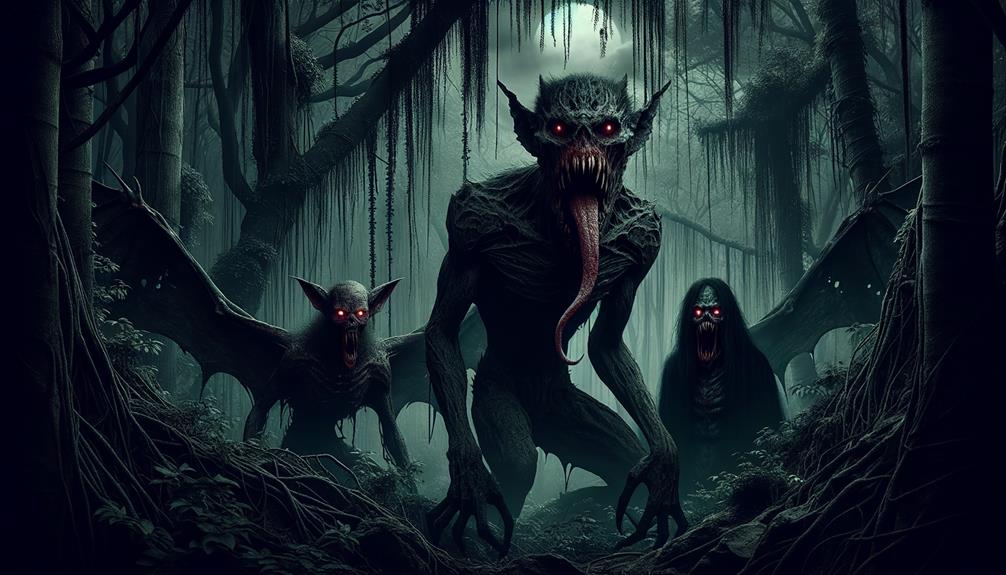
The Aswang – An Enigma of Fear and Fascination
Immerse yourself in the heart-stopping world of Filipino folklore as we unravel the intriguing narrative of the Aswang, a creature shrouded in both terror and intrigue. This legendary entity is renowned for its chilling ability to adopt a plethora of sinister forms, each more hair-raising than the last.
The Aswang – A Multi-faced Avatar of Horror
The Aswang, often compared to a vampire in Filipino mythology, is a master of disguise, morphing into five distinct, terrifying entities:
- Vampire: Embodying the essence of nocturnal dread, this version of the Aswang uses a tongue akin to a proboscis to drain the lifeblood of its victims.
- Silagan: This form specifically preys on expectant mothers, targeting their unborn children in a horrifying show of predation.
- Manananggal: A truly spine-chilling sight, this Aswang can separate its upper torso to take flight and hunt.
- Viscera Sucker: This supernatural incarnation has the macabre ability to extract the entrails of its unfortunate victims.
- Ousang: Found chiefly in the province of Capiz, this variant is known for its insatiable, grotesque appetite.
Aswang – A Staple of Filipino Horror
These various forms have embedded the Aswang deep within the roots of Filipino horror, sparking a mix of fear and fascination across the Philippine Islands. The Aswang's enduring presence, from age-old folklore to contemporary media, bears testament to its dynamic adaptability and the profound influence of cultural memory.
*"The Aswang has firmly rooted itself in Filipino horror, causing fear and fascination throughout the Philippine Islands."*
In the spirit of our exploration, we recommend the book "Aswang: Myth, Monster, Metaphor" for those interested in delving deeper into the subject. This comprehensive guide offers a detailed look at the Aswang's cultural significance and its various forms.
Protective Measures Against Aswang
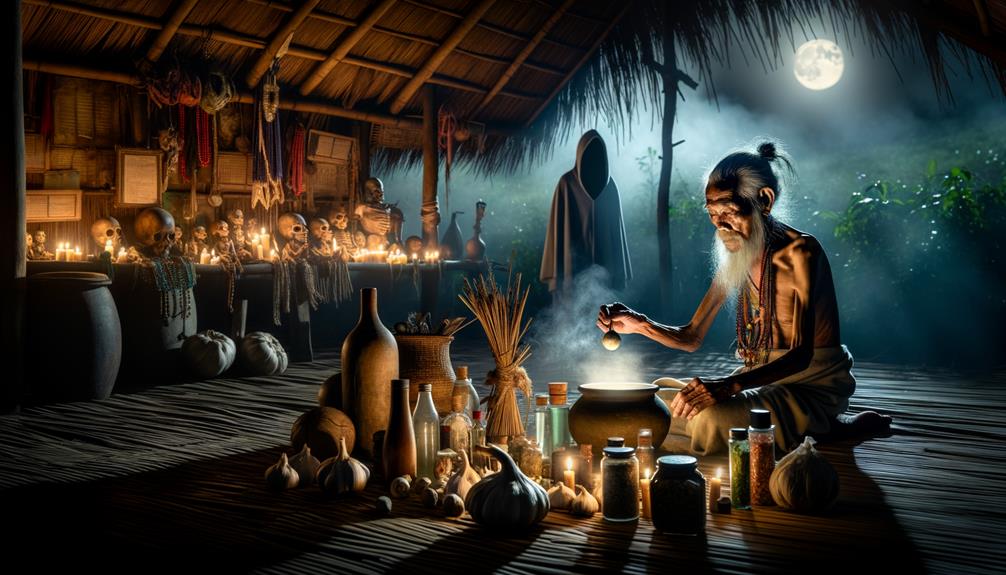
Battling the Aswang: A Guide to Philippine Folklore Protection
In the heart of Philippine folklore, the term 'Aswang' echoes chilling tales of a vampire-esque creature, notoriously known for its after-dark attacks. Most prevalent in the Visayas Islands and the Capiz region, the Aswang is a symbol of terror and fear. However, with the right protective measures, you can keep this daunting presence at bay.
Shielding Against Aswang Attacks
Historical methods to ward off these frightful beings are as diverse as they are intriguing. From the pages of Folk Literature to the columns of the Philippines Press, a panoply of protective tools has been documented. Holy symbols, spices, ash, vinegar, and salt are just a few of the elements believed to repel the Aswang's ominous spirit. More interestingly, even unconventional items such as stingray tails, larger crustaceans, betel nut chew, and urine are believed to hold the power to repel these nocturnal creatures.
Structural Safeguards: The Power of Architecture
The design of your dwelling can also serve as a protective fortress against the Aswang. Strategically placing a ladder in reverse leading to your house or inserting sharp sticks between house floor bamboos can potentially keep these creatures at bay.
Ceremonial Practices: Embracing the Supernatural
In the midst of childbirth, a Filipino witch doctor might suggest an unusual ritual. The husband is advised to stay naked under the house, brandishing a sword. This unique practice is believed to confound the Aswang. Protecting those in sickness is also of paramount importance. It is recommended for them to avoid houses with holes and to refrain from groaning loudly. These actions are believed to attract the dreaded Aswang.
Unlocking the Richness of Filipino Cultural Heritage
These protective measures against the Aswang, deeply embedded in the Filipino cultural heritage, reflect the rich and intricate mythology of the country. Each practice, each symbol, each ritual, is a testament to the complex folklore that shapes the Filipino identity.
Final Thoughts
The Aswang, though a fearsome presence in Philippine mythology, is an entity that can be countered with the right measures. By understanding these prevention methods, one not only shields oneself from the Aswang but also delves deeper into the cultural fabric of the Philippines. Remember, knowledge is power, and understanding your cultural heritage is the first step to embracing it.
Aswang Influence on Modern Society
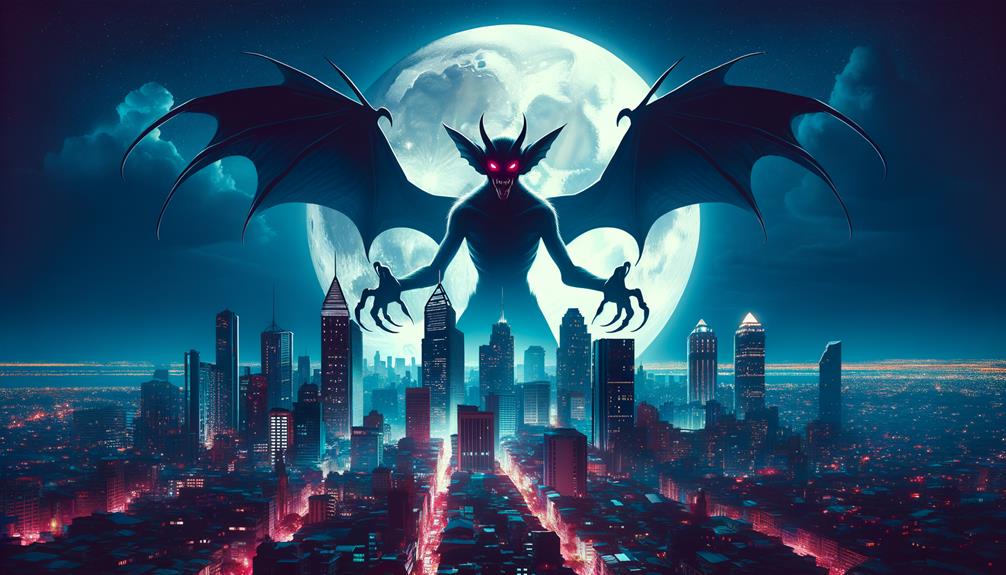
The Aswang Influence: A Cultural Phenomenon beyond Folklore
The Aswang, a captivating vampire-like spirit from Filipino folklore, has an enduring impact that transcends traditional narratives, embedding itself deeply into the Philippines' modern societal fabric. This intriguing cultural entity has shaped contemporary Filipino behavior and remains an integral part of the nation's cultural panorama.
The Aswang's Pervasive Influence in Media: A Closer Look
- Cinematic Impact: The Aswang has consistently emerged as a dominant figure in Filipino horror and thriller genres. Its popularity even extends internationally, with a notable appearance in the supernatural drama television series, Grimm.
- Literary Presence: The Aswang's influence permeates a wide range of literature, from captivating children's tales to scholarly compositions from the esteemed University of the Philippines.
- Artistic Influence and Cultural Impact: The Aswang has profoundly impacted Filipino arts, rituals, and folklore. The captivating tales of the Aswang, initially propagated by Spanish conquerors, continue to inspire both fear and fascination among Filipino individuals.
This deep-rooted influence of the Aswang is not just a testament to the enduring power of folklore; it also highlights the resilience and adaptability of cultural narratives in the modern era. The Aswang continues to shape societal norms, underscoring the sustained influence of myth in molding societal behaviors.
The Aswang's Resilience: A Powerful Cultural Narrative
The Aswang's presence in modern society is more than just a folkloric remnant; it's a demonstration of the enduring power of cultural narratives. Even in the face of modernity, the Aswang continues to influence societal norms, proving that myths can still hold sway over societal behaviors. This fascinating cultural entity is a clear example of the resilient, adaptive nature of folklore, and its influence serves as a reminder of the power of stories in shaping our world.
*"The Aswang continues to be a powerful force in shaping societal norms, proving the enduring power of myth in molding societal behaviors."*
This engagement with the Aswang phenomenon not only provides a unique insight into Filipino culture but also serves as a model for understanding the intricate relationship between folklore and societal norms in other cultures. It's a testament to the adaptability and resilience of cultural narratives in the face of modernity. The Aswang's influence is a beacon of the enduring power and relevance of folklore, demonstrating its crucial role in shaping societal behaviors.
Media Representation of Aswang
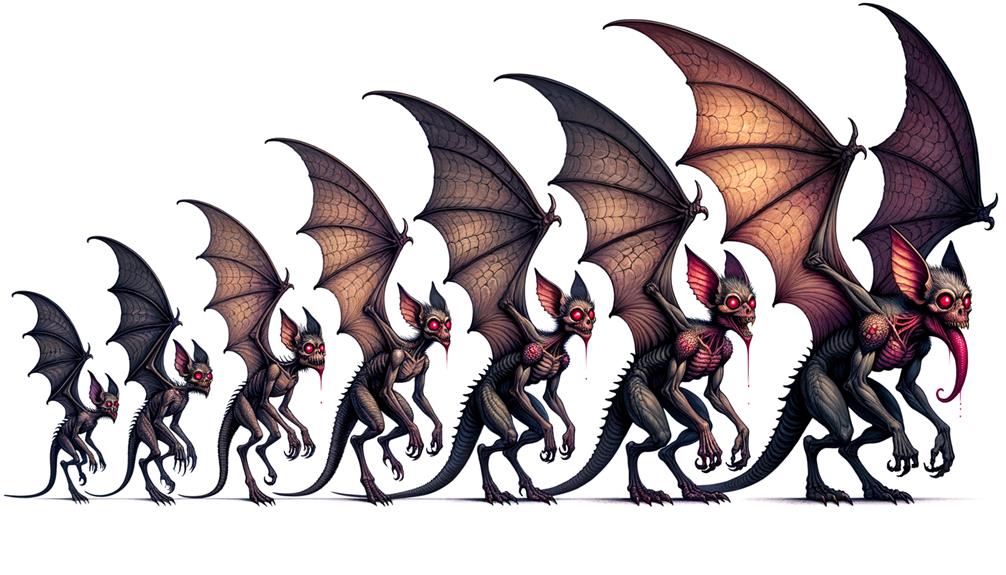
The Aswang's Intriguing Media Portrayal: A Closer Look
The Aswang, a figure deeply entrenched in the folklore of the Malay people, frequently seizes the spotlight in the Philippine media scene, taking on the role of the villain in a broad range of literary works, television series, and films. This portrayal often strikes a chilling chord, painting a grisly picture that sends shivers down the viewer's spine.
Take, for instance, the drama television series Grimm, where the Aswang is introduced as a bone-chilling monster, the most terrifying yet. Here, it's depicted as a viscera sucker – a horrifying creature believed to inhabit the province of Capiz. The series spins a tale of the Aswang preying on the pregnant childhood friend of one of the characters, Wu, instilling a deep sense of dread among its viewers.
To further illustrate the impact of the Aswang's media presence, let's delve into a breakdown of its remarkable portrayals:
| Media Type | Title | Aswang Depiction |
|---|---|---|
| Television | Grimm | Most horrifying monster, viscera sucker |
| Literature | Trese | Principal villain, manifesting pure evil |
| Film | Aswang (1992) | Primary antagonist, creates havoc in a town |
From the table, it's evident that the Aswang's media representation is not only diverse but also highly impactful. It's skillfully used to instill a profound sense of dread and terror, possibly a malevolent design of the devil, positioning the Aswang as a symbolic embodiment of evil. This timeless legend continues to thrill and horrify audiences, keeping them on the edge of their seats.
In Conclusion
The Aswang's representation in media is a masterstroke of storytelling, flawlessly blending tradition, fear, and anticipation into an unforgettable narrative. As you journey through the different portrayals, remember – the Aswang is more than just a character. It's a symbol, a narrative device, and a testament to the power of folklore in modern storytelling.
Frequently Asked Questions
Is the Aswang a Vampire?
Is an Aswang a Vampire? Exploring Filipino Folklore
Diving into the Aswang Phenomenon
The Aswang, a captivating creature from Filipino folklore, may not be a conventional vampire, but it surely embodies numerous vampiric qualities. Known for its insatiable bloodthirst and flesh-craving tendencies, it possesses an uncanny resemblance to the age-old vampire narratives we're so familiar with.
Drawing Parallels: Aswang and Vampires
Let's delve into the unique traits of the Aswang. Just like vampires, Aswangs are infamous for their bloodsucking and flesh-eating habits. They slide into the night, hunting for prey, their eerie presence echoing traditional vampire lore.
Providing Context: Aswang in Filipino Folklore
In the rich tapestry of Filipino folklore, the Aswang holds a unique position, imbued with a distinct blend of terror and fascination. It's these very traits that make it comparable to the infamous vampire, albeit with its own unique twist.
Aswang and Vampire: A Comparative Study
While the Aswang and the vampire share similar characteristics, it's essential to remember that they're distinct entities, each with their own cultural significance. The Aswang is not merely a Filipino vampire; it's a unique creature with its own rich backstory and terrifying habits.
Wrapping Up the Aswang-Vampire Debate
So, if you're ever asked, "Is an Aswang a Vampire?" you can confidently reply, it's not exactly a vampire. It does, however, possess numerous vampire-like traits. It's a fascinating part of Filipino folklore, known for its bloodsucking and flesh-eating habits, thereby drawing parallels with traditional vampire lore.
As we continue to explore the world's myths and legends, let's remember to appreciate the unique characteristics and cultural significance of each creature, whether it's the Aswang, the vampire, or any other fascinating folklore entity.
What Is the Vampire-Like Creature in the Philippines?
Meet the 'Aswang': The Vampire of the Philippines
In the vibrant tapestry of Filipino folklore, a creature lurks that's reminiscent of the infamous vampire. This fearsome entity is known as an 'aswang'. Renowned for their ravenous thirst for blood and remarkable shape-shifting capabilities, 'aswang' are both fascinating and terror-inducing.
*Unraveling the 'Aswang' Mystery*
The 'aswang' is not just a mere bloodsucker. It dons many forms, such as the 'mandurugo' and 'manananggal', each more terrifying than the last. Picture a creature that can separate its upper torso and sprout wings to fly in search of its prey – that's the 'manananggal' for you. Meanwhile, the 'mandurugo' is a slick shape-shifter that can morph into a beautiful woman by day and a blood-hungry monster by night.
These nightmarish creatures, though spine-chilling, contribute significantly to the rich cultural narrative of the Philippines. They serve as cautionary tales and moral compasses, shaping societal norms and behaviors in this Southeast Asian country.
*Encounter the 'Aswang' – Safely, of Course!*
If you're interested in delving deeper into the world of 'aswang,' we recommend exploring Filipino literature and films that delve into this supernatural realm. Titles like "Aswang: A Journey into Myth" and "The Aswang Phenomenon" provide intriguing insights into these mythical creatures and their place in Filipino society.
Remember, while the 'aswang' might send shivers down your spine, they're an integral part of Filipino folklore. Their tales not only entertain but also offer a unique perspective on the country's cultural fabric.
Stay tuned, and we'll continue bringing you more fascinating stories from the world of the supernatural, ensuring your journey into mythology is as thrilling as it is enlightening.
What Does Aswang Do to Humans?
As an Aswang, a mythical creature in Filipino folklore, my traditional activity centers on preying on humans, specifically targeting pregnant women and newborns. My actions are defined by the extraction of livers, a predilection particularly pronounced for those adorned in white. As the darkness of night falls, I may present myself in a headless form, indulging in the consumption of human flesh.
What's an Aswang's Modus Operandi?
For those unfamiliar with the Aswang, let's delve into its notorious deeds. The Aswang is infamous for its insatiable appetite for human livers, especially those of individuals dressed in white. This creature's predilection for pregnant women and newborns is a chilling highlight of its folklore. But the Aswang's nocturnal activities add an extra layer of horror. It is said to appear headless, feasting on human flesh under the cloak of darkness.
Facing the Aswang: A Real-world Example
Imagine a peaceful village, shrouded in the stillness of the night. Suddenly, a headless figure emerges, its eerie presence sending shivers down your spine. This is the Aswang, a creature notorious for its appetite for human flesh. This is not a scene from a horror movie, but a vivid illustration of the Aswang's terrifying nocturnal activities.
The Aswang's Nightly Feasts: A Detailed Look
When the sun sets and darkness blankets the world, the Aswang comes out to play. Its modus operandi? To appear headless and feast on human flesh. The Aswang's taste for livers, particularly those of individuals wearing white, is a chilling detail in its folklore. Its preference for pregnant women and newborns adds to its macabre reputation.
What Does the Aswang Symbolize?
Unlocking the Symbolism of the Aswang: A Journey into Fear and Complexity
For me, the Aswang, a creature of folklore, serves as a powerful symbol that intertwines the fear of the unknown with the intricate fabric of human nature. This legendary creature is a reminder that vigilance is essential, highlighting the unending influence of storytelling in our lives.
Delving into the Fear of the Unknown
The Aswang represents our innate fear of the unknown. Its existence in folklore is a testament to our collective anxiety, borne from the uncertainty that accompanies the unfamiliar. This is not a mere cliché – the Aswang is a real-world example of how societies create symbols to encapsulate their fears and uncertainties.
The Complexity of Human Nature Unveiled
The Aswang's multi-faceted nature symbolizes the complexity of human beings. It is not merely a monster; it is a reflection of our own selves, the embodiment of our virtues and vices. This creature, in its ambiguity, is a cautionary tale that pushes us to think deeply about our own actions and motivations.
The Power of Storytelling: A Cautionary Tale
Storytelling is a potent tool that shapes our worldviews and behaviors. The Aswang narrative serves as a reminder of the enduring power of stories. It's not just a tale from the past; it's a lesson for the present and a warning for the future.
Recommendation: Keep the Stories Alive
In our fast-paced, modern world, it's easy to forget the old tales that shaped us. But let's not let the stories fade. Keep them alive. Tell them to the young ones. Write about them. Remember, these narratives, like the story of the Aswang, are more than just stories; they are invaluable lessons wrapped in the cloak of folklore.

